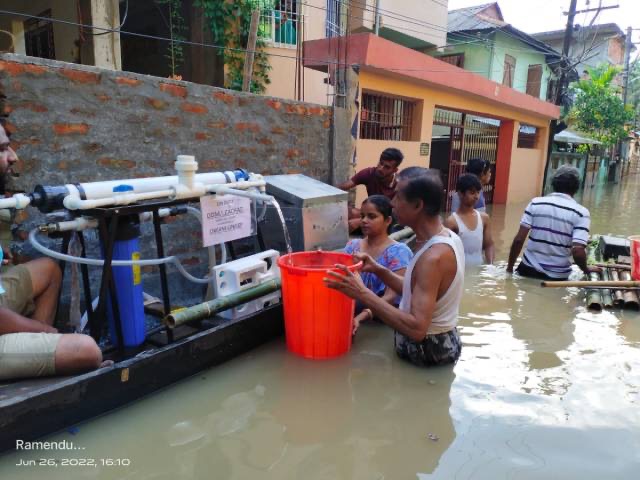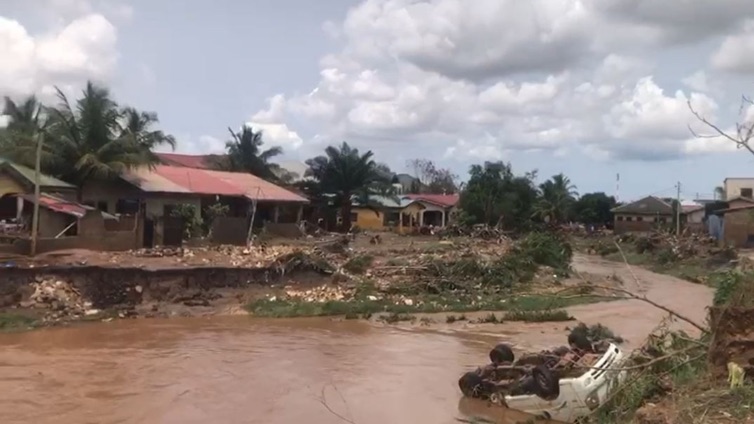Residents blame poor drainage planning for deadly Lakeside floods

Residents of Lakeside in the Adentan Municipality are reeling from a devastating flood that swept through the area on Saturday, May 18, claiming at least three lives and causing widespread destruction to homes, shops, and personal property.
At the heart of the tragedy, residents say, is a flawed drainage design on the recently constructed East Legon Hills road. They blame engineers and contractors for diverting multiple drains into a single outlet, which, they believe, caused the severe overflow and flooding.
Poor Drainage Design Blamed
Speaking to JoyNews, resident and business owner Prince Ansah expressed deep frustration at the situation.
“To the best of my knowledge, the problem lies with the contractor who worked on the road. Every time it rains in Ghana, it gets bad — but here, we suffer the most. The contractor should have built the gutter deeper and covered it to stop people from dumping rubbish in it. The rubbish blocks the water, and that’s what causes the flooding.”
According to him, the construction was not only inadequate but also abandoned midway.
“The gutter was built only up to a certain point where it should have been extended. It was just left unfinished. With the volume of water flowing in this direction, the drainage system gets overwhelmed, and water begins to flow back, flooding homes and roads.”

He revealed that the floodwaters had damaged his car and made movement in the area impossible.
“My car is gone because of the blocked drainage. Driving through here is a nightmare. The contractors aren’t helping us — they know what needs to be done, but the work is careless.”
Another resident, Alex Narh, echoed the concerns, saying the area has become a drainage dumping ground for several nearby communities.
“What’s causing this is the construction of a main drain from Katamanso, Nkansah Hospital, and other places, all redirected here. All the water from upstream now flows into our community. And to make matters worse, people are putting up buildings on natural water paths, blocking the flow even more.”

Mr. Narh urged the government to take urgent steps to reassess the drainage system and stop approving construction that interferes with natural watercourses.
“When the government comes to inspect, they should look at where the road leads, where the gutters are placed, and whether they serve the community or endanger it. The rains from Oyarifa, the mountains, and Katamanso all drain here — and now lives have been lost.”

The residents are demanding accountability from both the contractors and supervising authorities.
“Officials must visit the site, inspect ongoing work, and make sure it is being done to standard,” Mr. Narh stressed.
“This is no longer a minor issue — we’ve lost lives. It’s time for the government to act decisively, hold the engineers accountable, and prevent this from happening again.”
As the community mourns its losses, residents hope this tragedy becomes a turning point in how urban infrastructure projects are planned and executed in flood-prone areas of Accra.




